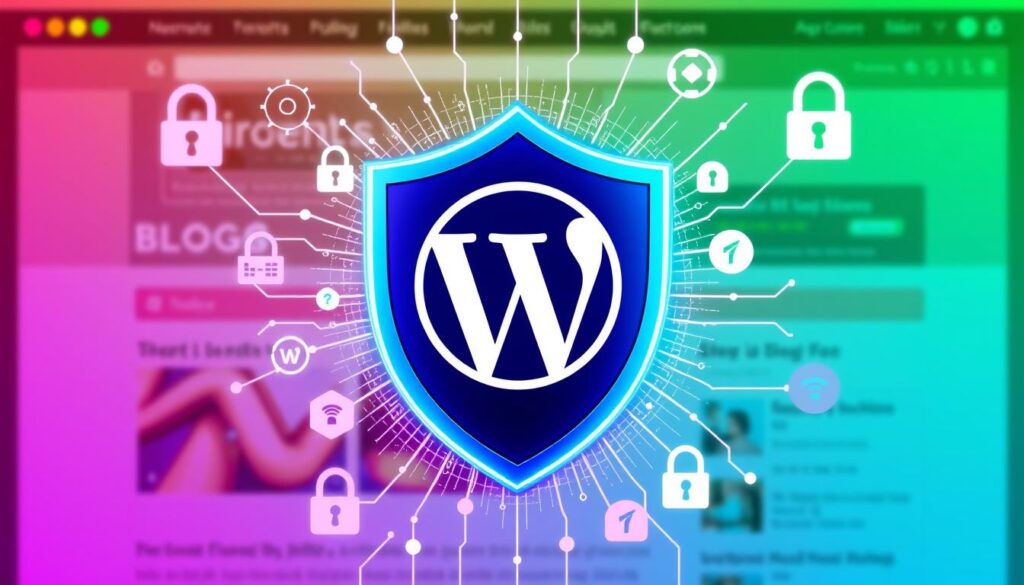Kelly was enjoying her morning coffee and the sunrise. She went to check her blog’s stats. But, she found signs that someone else accessed her site. What started as a calm morning turned into a rush to protect her blog.
Many face this issue, just like Kelly. Every day, Google stops over 10,000 websites because they’re unsafe. WordPress blogs are often targets. Digital security is now as crucial as locking up at night. Secure your WordPress blog with strong passwords, updates, and security plugins.
Data theft is a real danger for anyone. Daily, Google alerts about 12-14 million users of unsafe websites. It’s vital to use strong security measures. This way, you won’t become part of the alarming statistics.
Key Takeaways
- A secure WordPress website requires multiple layers of protection.
- Google blocks over 10,000 websites each day due to malware.
- Regular updates of WordPress core, plugins, and themes are crucial.
- Strong, unique passwords significantly reduce the risk of hacking.
- Security plugins can greatly enhance the safety of your WordPress blog.
- Automatic and manual updates play a vital role in WordPress security.
- Off-site backups are essential for quick recovery after security breaches.
The Importance of WordPress Security
It’s very important to have strong security for your WordPress site. This protects you from losing money and harming your reputation. Because WordPress is used on over 44% of all websites, it attracts a lot of hackers. WordPress security tips help keep your site safe from theft, unwanted access, and harmful software.
“Approximately 90,000 WordPress sites are compromised every day, highlighting the need for robust security measures.”
Google blocks thousands of sites each day because of malware and scams. This shows how crucial WordPress cybersecurity is. It keeps your site working and visible to others. Hackers often attack outdated plugins and core files. Sticking to WordPress security best practices can help avoid these problems.
Security plugins are really helpful. They stop over half of the bad login tries. A Web Application Firewall (WAF) also protects against serious threats, like SQL injections and DDoS attacks. Keeping WordPress and its components up to date reduces risks. This is true if updates happen within a week of their release.
SSL certificates are key for safe online transactions. They use strong encryption to protect data. Sites with SSL often rank better in search results. This can lead to a 20% boost in visitors. It’s also important to check your site’s security often. This can catch early signs of hacking.
Using strong passwords and updating WordPress Salt Keys are good ways to protect your data. By following these WordPress security tips and WordPress security best practices, site owners can improve their WordPress security. This makes it harder for cyber threats to do harm.
Understanding WordPress Security Measures
Securing your WordPress blog is a must to keep it safe from hackers. WordPress runs more than 43% of all websites around the world. This makes it a big target. A strong wordpress website security plan is needed to handle risks and protect against attacks.
Common Security Vulnerabilities
To protect your WordPress blog, you need to know the main security issues. These issues include:
- Weak passwords: Sites with simple or default usernames and passwords are easy targets. Actually, 81% of breaches related to hacking are because of stolen passwords.
- Outdated plugins or themes: More than 70% of wordpress security problems are from outdated plugins and themes. Updating them can cut the risk of attacks in half.
- Poorly coded plugins: These can create weak spots in your site’s security.
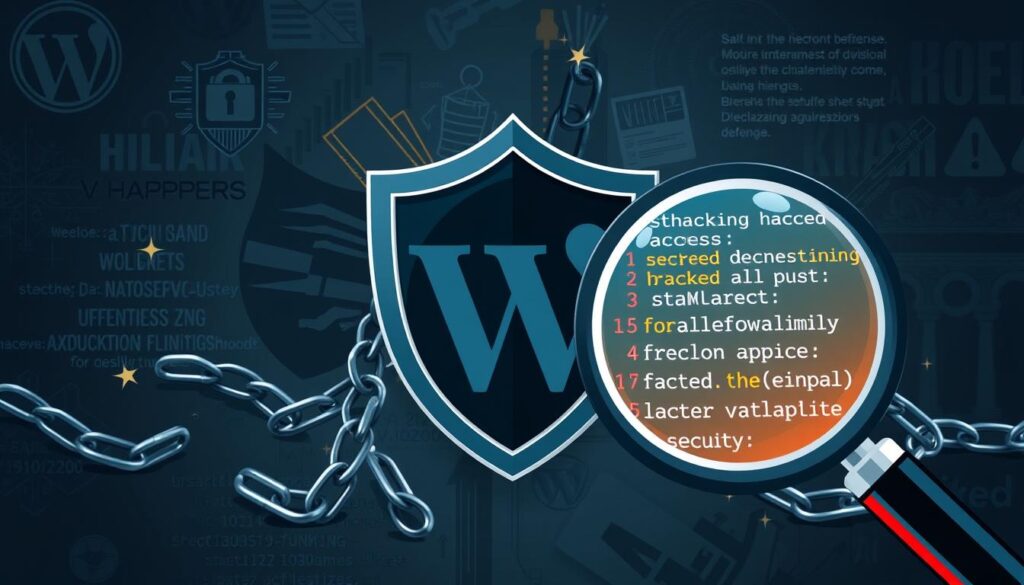
Tools to Protect Your Site
To keep your wordpress blog safe, it’s important to use the right tools. Some key tools and practices include:
- Security plugins: Tools like Sucuri scan for threats regularly with a 95% success rate.
- Web application firewalls: These monitor for risky activity and stop bad attacks early.
- Strong encryption practices: Using HTTPS and SSL certificates makes your site much safer.
By knowing the common risks and using the right tools, you can greatly lower the danger to your WordPress site.
Keeping WordPress Updated
Keeping your WordPress site updated is very important. It helps protect your blog from attacks. Regular updates mean security problems are fixed quickly. This makes it hard for hackers to break in. A study showed that 90% of hacked websites were using old software. Sadly, about 70% of WordPress sites don’t get updated often. This leaves them open to attacks.
Updating your WordPress regularly is a must. Websites that are updated often are safer. They are less likely to get hacked. There are two main ways to update your WordPress: automatically or by hand.
Automatic Updates
Automatic updates make keeping your site safe easy. They update your site on their own for small changes. This way, your WordPress stays current with little work from you. Experts suggest turning on automatic updates. It’s a good way to deal with security issues fast.
Manual Updates
For bigger updates, you might need to do it yourself. This is because you have to make sure everything works together well. It’s important to check for updates often and apply them quickly. Following a good security checklist can guide you. By doing these updates yourself, you help keep your WordPress site secure and running smoothly.
Creating Strong Passwords and User Permissions
Creating strong, unique passwords and managing user permissions wisely is key to protecting your WordPress blog. Weak passwords make your blog easy for hackers to break into. This is why having a strong password for each user is crucial for security.
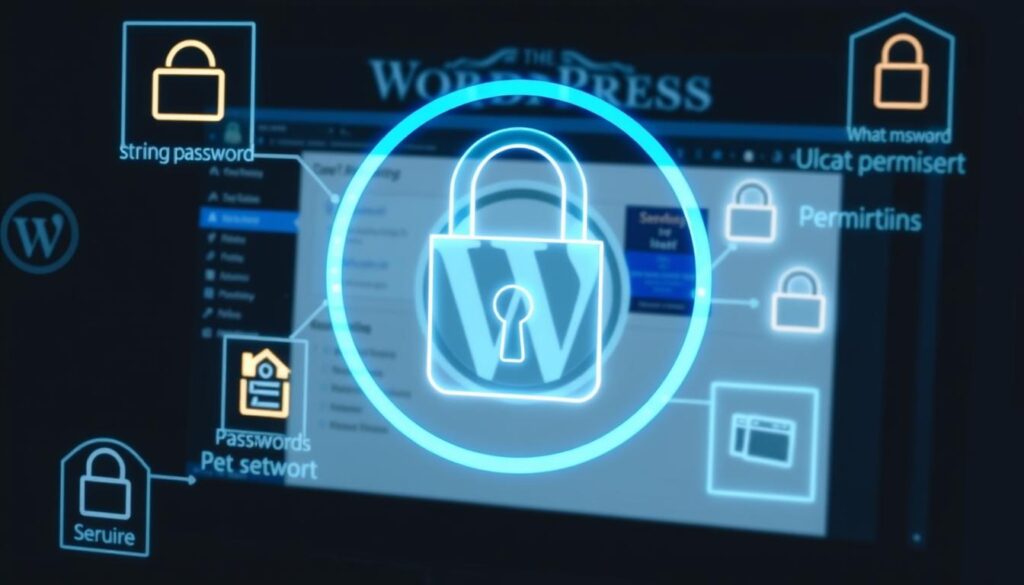
Tips for Strong Passwords
To pick a strong password, focus on making it unpredictable and long. Here are some ways to do that:
- Use at least 12 characters with a mix of upper and lower case letters, numbers, and symbols.
- Consider using a password manager to create and keep track of complex passwords.
- Stay away from using things like names, birthdays, or obvious words as passwords.
- Change your password every 90 days to keep your blog secure.
- Look into security plugins like iThemes Security or Shield Security PRO for setting strong password rules.
Changing your password often and not using the same one on different sites makes it harder for hackers. Many people use the same weak password everywhere, which is risky. Having a strict password rule helps keep your WordPress site safe.
User Roles and Capabilities
Knowing about user roles and what they can do on your WordPress site is important for security. WordPress lets you give users different roles with specific jobs. Here’s how to use this feature well:
- Only give high-level roles, like admin and editor, to people who really need them.
- Check and change user permissions regularly to avoid giving too much access.
- Only let trusted users do sensitive tasks by managing roles and capabilities carefully.
- Use plugins to watch and record what each user does, tracking any changes.
To keep your WordPress site safe, make sure to use strong passwords and control access carefully. By following these steps, you’ll make your site much more secure from attacks, giving you peace of mind.
Hosting Provider’s Role in Security
Hosting providers are key to making sure your wordpress site protection is solid. With WordPress being so popular and often targeted by hackers, it’s vital to choose a reliable host. They should offer tight security through constant network checks, DDoS defense, and the latest PHP on their servers for a secure wordpress website.
Secure Hosting Features
When picking a hosting service for your wordpress blog safety, certain security features are a must. First, find one that comes with DDoS protection to block harmful traffic attacks. It’s also important to have malware scanning and cleaning to quickly address any security issues. Plus, always go for hosts that keep their technology, like PHP, updated since WordPress often updates its security.
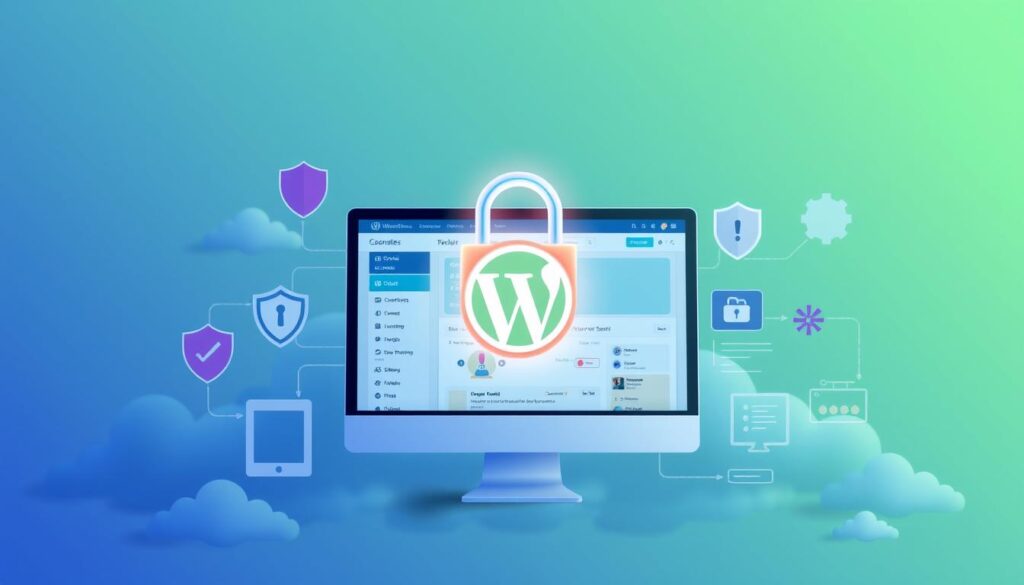
Recommended Hosting Providers
SiteGround and Kinsta are top choices for enhanced WordPress security. SiteGround gives you managed WordPress hosting, which includes frequent backups and expert support. Kinsta, on the other hand, offers isolated hosting environments. This setup stops the risk of issues moving from one site to another, which is common with shared hosting. With less than a third of WordPress users using auto-updates, managed hosting is very effective at lowering risk.
Installing a WordPress Backup Solution
Keeping your WordPress site backed up is vital for protecting your online work. By using wordpress backup solutions, you can quickly recover after losing data. This is a key part of wordpress security best practices.
Many plugins automate backups to make the process easy and reliable. For example, UpdraftPlus provides real-time backups for WooCommerce sites. Duplicator is trusted by over 1,500,000 professionals to back up WordPress sites. These tools schedule backups automatically, giving site owners peace of mind.
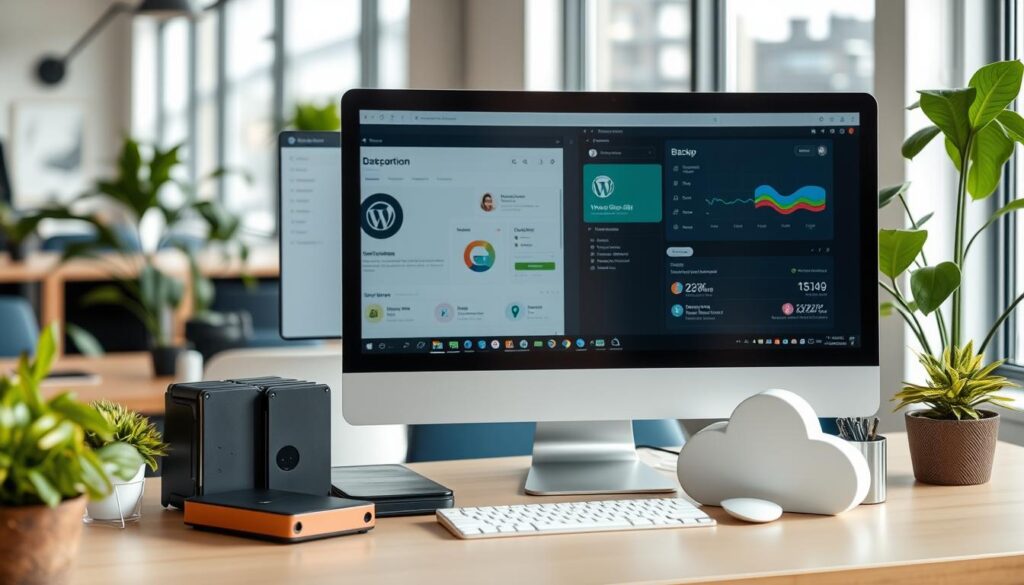
For the best security, store backups in several places. Use cloud services like Google Drive, Dropbox, or Amazon S3 and keep them locally as well. This approach lowers the risk of losing everything if one backup fails. Back up all WordPress files and your database. This way, you’ll have everything you need to restore your site fully.
Protecting wordpress blog means having a good backup plan. Back up your site daily if it gets a lot of traffic or updates often. Do backups when your site is less busy to avoid slowing it down. Also, regularly test your backups in a staging environment to ensure they work well.
- Duplicator Pro allows for disaster recovery links, enabling quick restoration in case of major failures.
- UpdraftPlus offers instant backups for every WooCommerce order, ensuring no data is lost.
- Backup plugins like BlogVault, Jetpack, and CodeGuard offer various pricing plans and features to fit different needs.
Having a strong wordpress backup solutions setup is crucial to wordpress security best practices. Proper backup strategies are essential for safeguarding your WordPress site against unexpected data loss. Making backups a regular part of site management is a must.
SSL/HTTPS Implementation
In today’s world, keeping your WordPress site safe is key. Adding SSL/HTTPS is essential for enhancing your site’s security. It makes sure any data shared stays protected.
Importance of SSL
SSL certificates play a big role in keeping information like credit cards and passwords safe. They encrypt data between the browser and web servers. This is important for protection.
Web browsers like Google Chrome use symbols, such as a lock or green URL bar, to show a site is secure. If a site lacks SSL, it’s tagged as “Not Secure.” This can turn away visitors and lower trust. Plus, SSL boosts SEO since search engines prefer secure sites.
Steps to Enable SSL
- Purchase an SSL Certificate: SSL certificates are available from providers like Domain.com, starting at $33 a year. WordPress.com also offers free SSL through Let’s Encrypt.
- Install the Certificate: After getting an SSL certificate, install it on your server. Hosting services like DreamHost and WPEngine provide free SSL certificates with their plans.
- Configure WordPress to Use HTTPS: Plugins like Really Simple SSL help by detecting SSL certificates and setting your site to use HTTPS automatically.
- Redirection and Mixed Content Fixes: Make sure your site’s content loads over HTTPS by redirecting HTTP traffic. You can also adjust your site’s URLs in the WordPress database with specific plugins.
By setting up SSL, you boost your site’s security and make logging in safer. This gives your visitors a more secure and reliable experience.
How to Secure Your WordPress Blog
Securing your WordPress blog means taking several steps. Since 43.2% of websites use WordPress, strong security is essential. Every day, around 30,000 new websites get hacked, and small businesses are often the targets.
“Only 14% of small businesses are prepared to defend against online attacks,”
First, choose a good hosting provider. They should offer at least 99.5% uptime and provide isolated servers for better security.
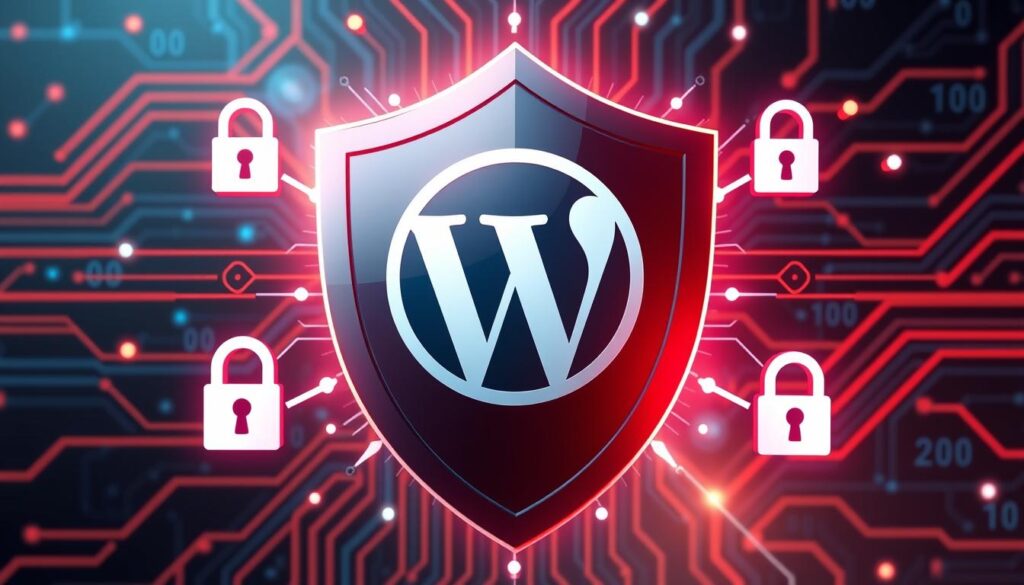
It’s critical to keep WordPress updated. Use WordPress Enhanced Automatic Updates to stay current and avoid old version vulnerabilities. Sadly, 35.3% of WordPress sites are not up-to-date, making them more prone to attacks.
Creating strong passwords and setting user permissions are key. Don’t use easy usernames like “admin.” Use WordPress’s password meter to make strong passwords with numbers, symbols, and both upper and lower case letters.
A Web Application Firewall (WAF), like Cloudflare or Sucuri, adds extra security. It helps control who can access your site, keeping it safe from various attacks.
Also, back up your data regularly and use SSL/HTTPS for secure data transmission. SSL certificates make your blog’s data more secure with HTTPS protocol.
Finally, good security practices and educating users help prevent problems. Keep everything updated, choose secure hosting, make strong passwords, use a WAF, and enable SSL. These steps are vital for WordPress blog security.
Using Reputable Security Plugins
Keeping your WordPress blog safe is crucial. Using well-known wordpress security plugins improves your security significantly. Tools like Wordfence, iThemes Security, and Sucuri offer solid protection against many online dangers.
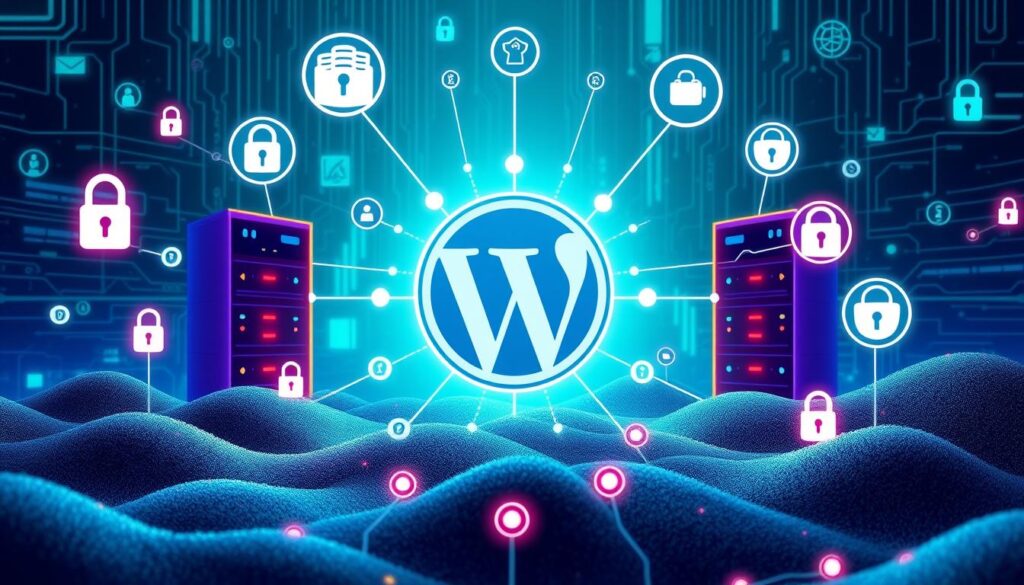
- Firewalls: A wordpress firewall setup is essential to manage traffic based on security rules. This helps stop bad traffic.
- Malware scanning: The plugins actively search your site for malware, quickly finding and dealing with threats.
- Live traffic monitoring: This feature keeps you updated on your site’s visitors and spots suspicious behavior fast to prevent wordpress hacking.
- Post-hack security actions: If a hack happens, these tools help you recover fast and make your site stronger.
Take MalCare, for example. It’s known for its quick and efficient malware spotting. It does this fast and without slowing your site. MalCare’s free version gives you a scanner and a firewall, but not malware removal. The full feature set comes with the premium, starting at $149 a year.
Wordfence is another great option, with a wide range of features. The free version scans 60% of your site. Its premium version, once $490 per site, now starts at $119/year, offering more value. But, some web hosts advise against Wordfence because it can slow down your server.
Sucuri’s free scanner checks your site’s public parts. Its premium service, at $199/year, scans more deeply but needs SFTP details for server scanning. Despite its cost, Sucuri’s comprehensive features might be worth it for advanced protection.
About 60% of WordPress sites get hacked due to old plugins. Regular updates and trusted wordpress security plugins lower hacking risks. A wordpress firewall setup, with malware scans and traffic monitoring, can prevent wordpress hacking. This keeps your blog safe, earning your readers’ trust.
The Benefits of a Web Application Firewall
Adding a Web Application Firewall (WAF) to your WordPress site is a major step in improving security. It acts as a shield, checking all incoming traffic to your site. This ensures only real users can get in. A WAF is key to keeping your wordpress blog safe and running smoothly.
How WAF Protects Your Site
A WAF guards against many online threats like SQL injection, cross-site scripting (XSS), and session hijacking. These can lead to lost data and compromised user info. With a WAF, your wordpress blog is safe from these common attacks. Plus, it helps stop DDoS attacks, keeping your site open even when traffic spikes.
- SQL Injection: Blocks unauthorized access attempts that exploit vulnerabilities in SQL databases.
- Cross-Site Scripting (XSS): Prevents malicious scripts from being injected into webpages.
- Session Tampering: Shields user sessions from being hijacked by attackers.
- DDoS Mitigation: Ensures your site remains accessible during distributed denial-of-service attacks.
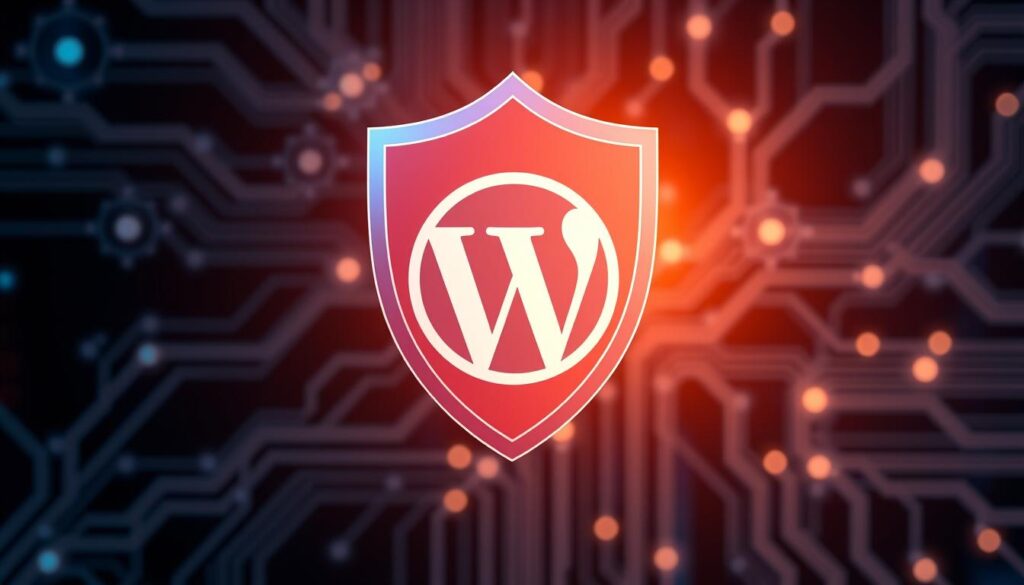
Recommendations for WAFs
Finding the right WAF is crucial for your wordpress firewall setup. Here are some top choices:
- Cloudflare: Offers strong DDoS protection and starts at $20 a month. It’s part of a larger security package and makes sure attacks don’t slow down your server.
- Sucuri Firewall: Comes with a CDN. Prices start at $9.99 a month, making it a budget-friendly option for small blogs. Full plans are available at $199.99 a year for extra security.
- Wordfence: Has a free version with basic WAF features, great for beginners. The premium version costs $99 a year and includes real-time updates and better support.
- Shield Security PRO: Starts at $11 a month and offers advanced features like silentCAPTCHA and a long IP blocklist, suited for experienced WordPress users.
Integrating a WAF into your security plan makes your site safer and more dependable. Keep your WAF updated and tweak rules as needed to protect against new threats. This will keep your wordpress blog secure for all visitors.
Limiting Login Attempts
Setting a cap on login attempts boosts your WordPress site’s security. It stops users from trying to log in too many times within a set period. This action deters brute force attacks and other harmful efforts.
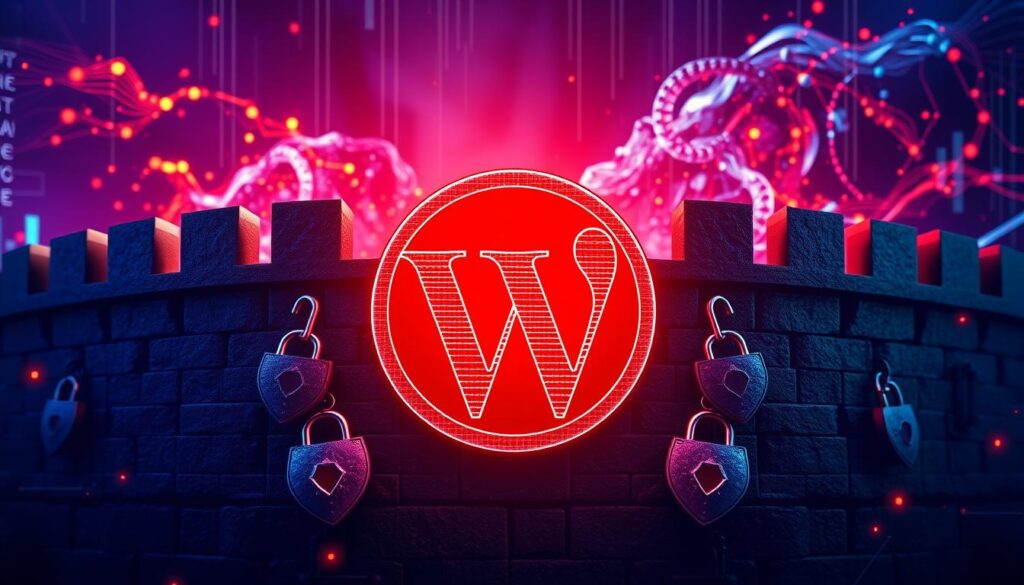
How It Prevents Brute Force Attacks
Brute force attacks mean making many tries to figure out a password. WordPress doesn’t limit login tries by default, letting attackers try endlessly. Setting a failed attempt limit, like three to five, blocks more tries. This keeps your site safe.
A good setting is to lock out after five failed attempts for 20 minutes. After four lockouts in a day, users must wait 24 hours. They also get notified after the third failed try. Such steps greatly lower the chance of hacks and protect your data.
Plugins for Limiting Login Attempts
To make limiting login tries easier, several plugins can help. Here are a few:
- Limit Login Attempts Reloaded: Over 2 million WordPress sites use this. It sets a max for failed login tries. You can choose a free or premium version. The premium costs $7.99 a month per domain, or $299.99 for life. It also respects GDPR by showing a notice when limits are on.
- Wordfence Security: This plugin is active on over 5 million sites. It offers broad protection, including limiting logins. It also has a firewall and scans for security issues. Adding Google reCAPTCHA boosts defense against DDoS attacks.
- Jetpack Protect: Part of the Jetpack plugin set, it helps stop brute force attacks. It does this by blocking harmful IP addresses automatically. This makes it simpler to keep your WordPress site safe.
Using these plugins improves your defense. It keeps important info safe and builds trust and interaction with your users.
Enabling Two-Factor Authentication (2FA)
In our digital world, it’s key to have a secure WordPress login process. Adding two-factor authentication (2FA) is a strong move. It cuts down the chance of someone getting in without permission, even if they know your password.
Statistics show that 99.9% of attacks from bots are stopped by 2FA. Recent data from 2023 shows attacks have gone up by 400%. This shows how vital it is to protect your WordPress site.
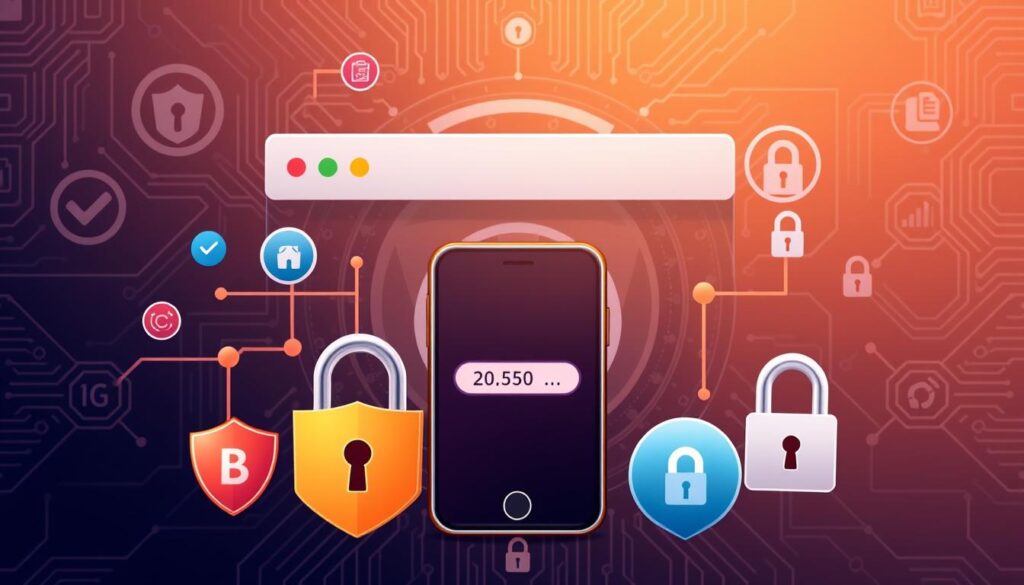
80% of security breaches happen because of weak or stolen passwords. So, 2FA is crucial on your wordpress security checklist. Apps for 2FA, like Authy, are better than texts for verification. They improve security by 5-10% more.
Over 70% of IT security experts push for using 2FA broadly. Adding 2FA doesn’t just boost security. It also makes users feel safer. Studies say 7 in 10 users prefer services that use 2FA.
Also, having 2FA means your account is 50% less likely to be hacked than with just a password. Sites without 2FA see about a 20% higher drop rate. This shows the benefit of adding this security step.
For WordPress VIP users, 2FA comes as standard. Making sure everyone, especially admins, uses 2FA greatly improves your site’s security.
To keep a secure WordPress login process, admins can make 2FA a must. They use filters like wpcom_vip_is_two_factor_forced. This can force 2FA on everyone or let users choose to use it.
Lastly, having backup codes is a safety net. It’s wise to print at least ten codes and keep them safe. This way, you can still get in if your main 2FA option isn’t available.
By adding two-factor authentication to your wordpress security checklist, you greatly lower the risk of breaches. This ensures your WordPress blog stays safe and secure.
Related Articles:
7 Blogging Mistakes New Bloggers Make and How to Fix Them
Avoid common security oversights with these tips.
Essential WordPress Plugins for a New Blog
Strengthen your blog’s security with the right plugins.
How to Track Your Blog’s Growth with Google Analytics
Use analytics to monitor security breaches or suspicious activity.
Keeping your WordPress blog safe is important. WordPress is used by 64.2% of all the websites, which is about 810 million sites. A big concern is handling the over 60,000 plugins available. Over half the issues come from not updating plugins or using them wrong.
It’s key to have strong passwords and set user permissions carefully. Make sure your password has at least 10 characters, including upper and lower case letters and symbols. You should also use two-factor authentication (2FA) for extra security. In 2021, Wordfence stopped more than 86 billion password attacks, showing how crucial this step is.
Updating WordPress, its themes, and plugins is a must-do. These updates fix security holes and protect your site. Big updates need you to install them yourself, but small ones are done automatically. Using trusted security plugins like Wordfence Security, Sucuri Security, and iThemes Security helps too. They offer tools to check your site’s safety and keep malware away. Google even keeps 12-14 million users a day from sites that might have malware. This proves staying proactive is necessary.

